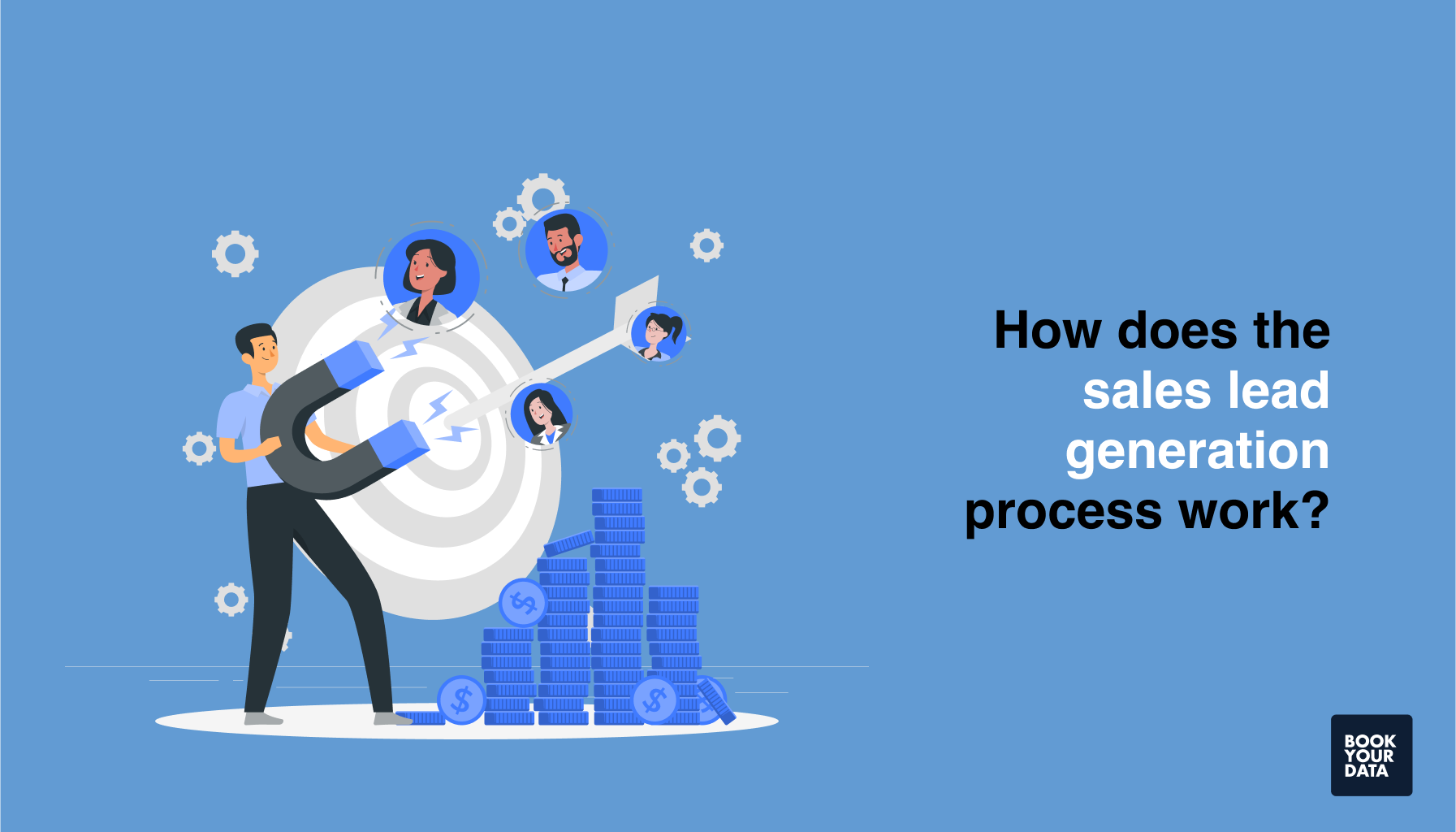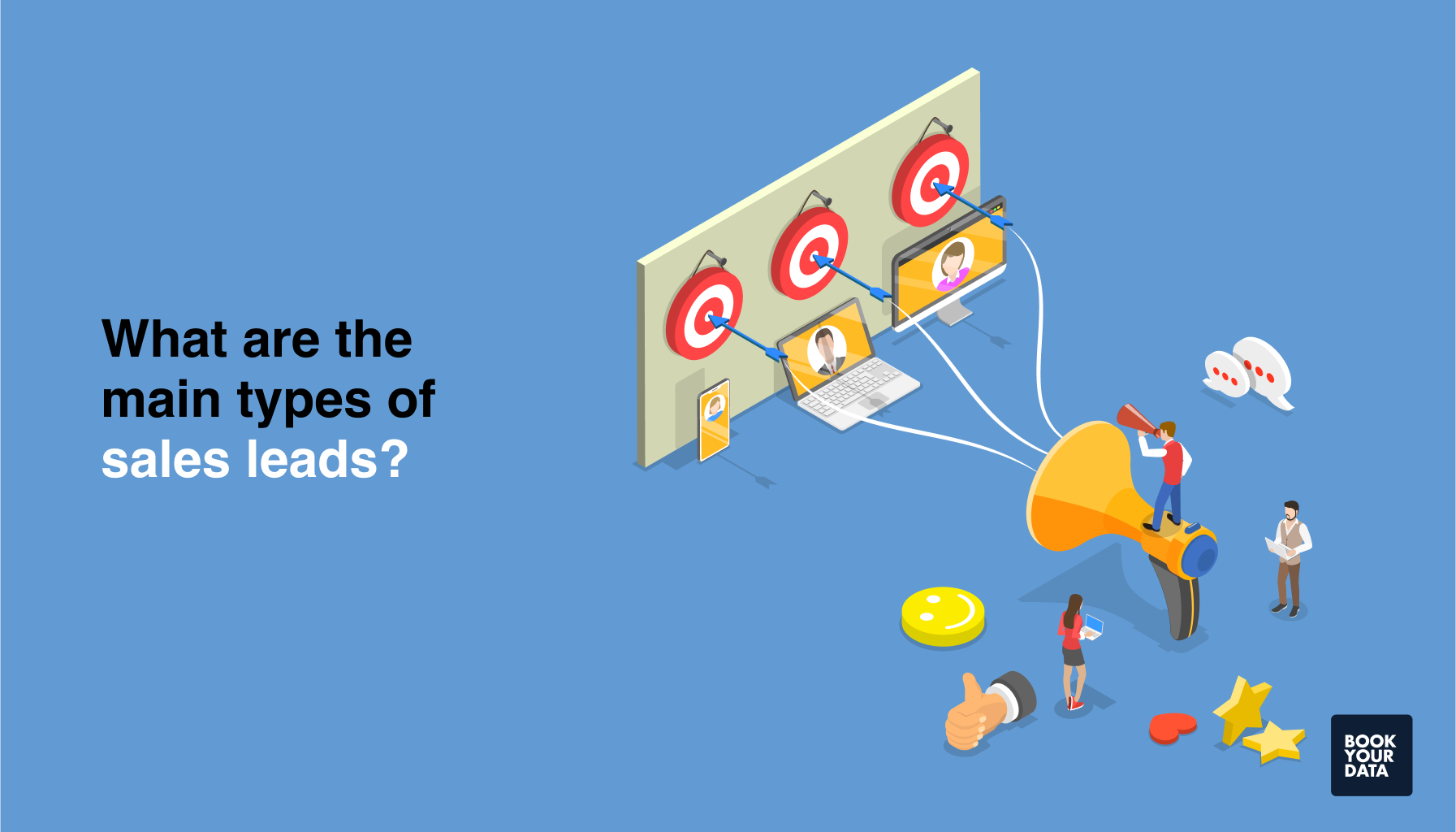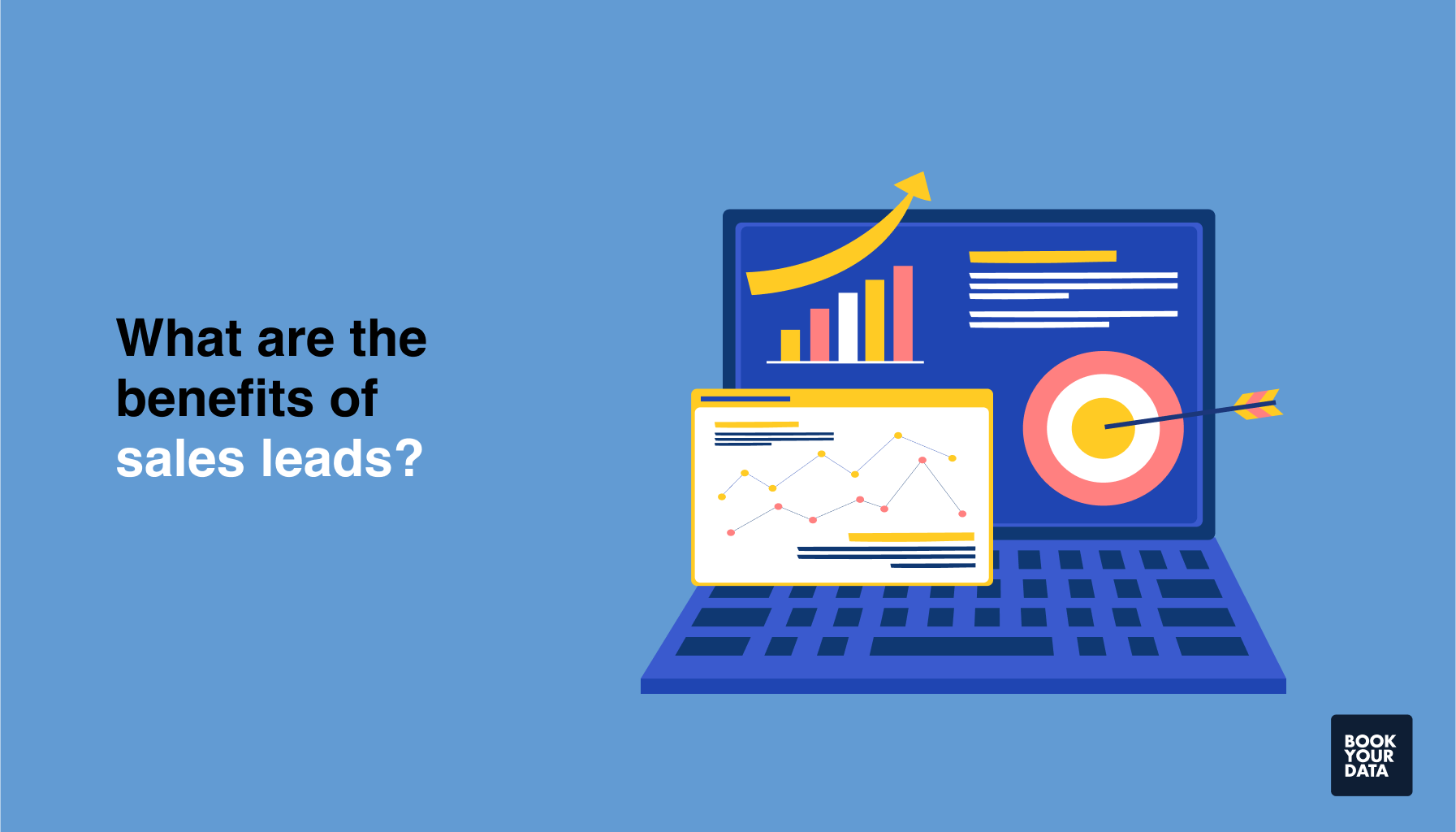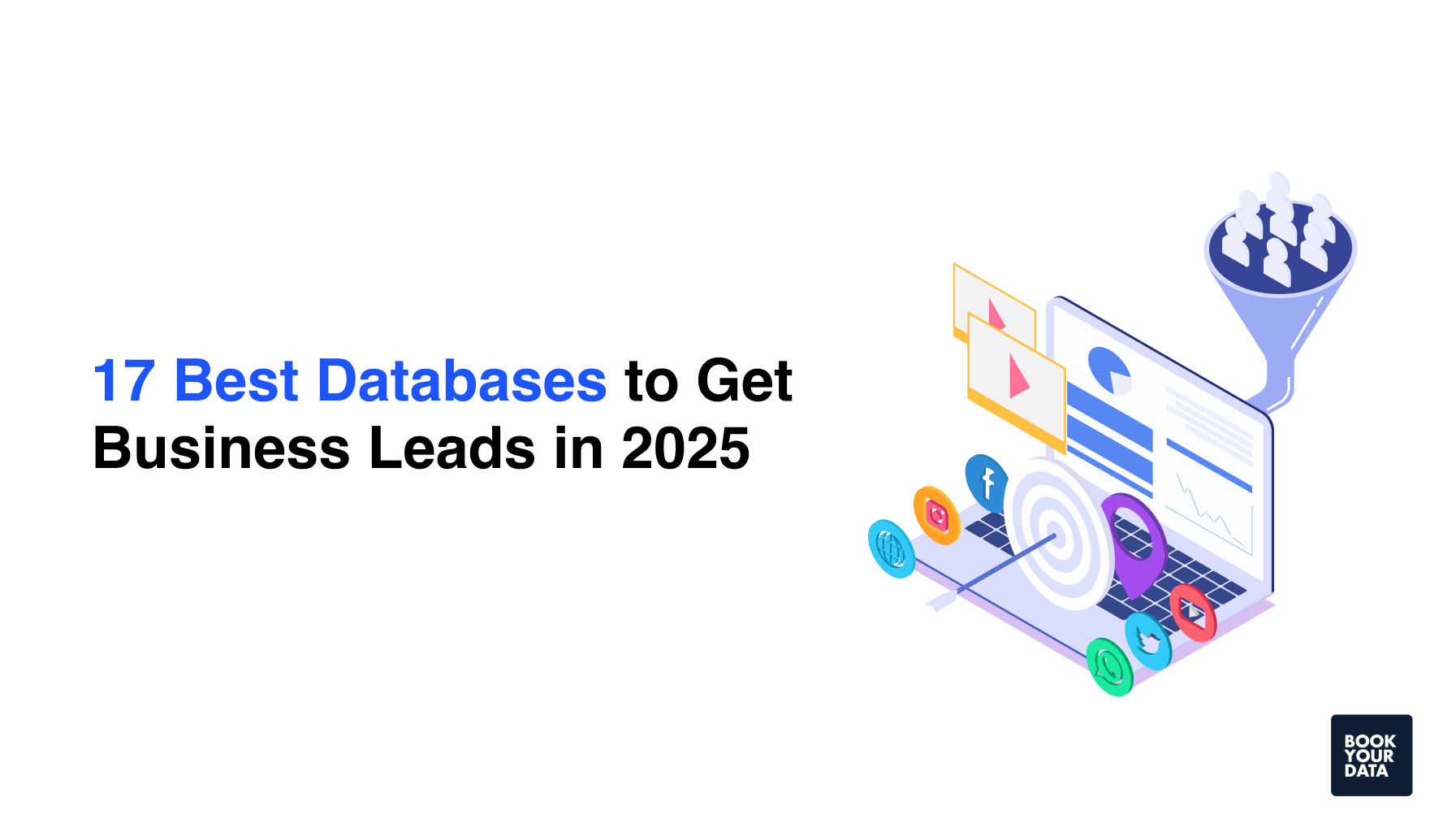Sales Leads: Definition, How it Works, Types, Benefits, and Best Practices
Sales leads are the individuals or organizations that show interest in a company’s product or service and may eventually become paying customers. Sales leads also represent the data that identifies someone as a potential buyer of a service or product.
A sales lead cycle begins when a sales professional identifies a contact, based on credible data, as a prospect that fits the company’s ICP (Ideal Customer Profile). The lead then proceeds through qualification stages to determine their intent to buy. Businesses use the lead’s contact information to reach out through sales-pitch emails, advertisements, and outbound campaigns.
The types of sales leads include cold, warm, and hot leads, with qualified categories such as IQLs, MQLs, SQLs, PQLs, and HQLs which require different engagement strategies. The benefits of sales leads include targeted marketing, improved conversion rates, shortened sales cycles, and insights into customer behavior.
Businesses must follow best practices to qualify a sales lead, which include identifying the ideal customer profile, selecting the right lead channels using scoring models, and automating lead nurturing workflows.
What is a sales lead?

A sales lead is an individual or organization identified as a potential customer based on credible data, signals of interest, or a match with a company’s ideal customer profile. A sales lead represents the starting point of the revenue cycle, someone who shows interest in a product or service or aligns closely with the attributes of existing high-value customers. Sales professionals, marketers, and business development teams treat sales leads as opportunities and follow the lead generation guide to turn them into qualified prospects and eventually paying clients.
How does the sales lead generation process work?

The sales lead generation process works by using strategies like outbound lead generation and email lead generation to find and engage potential customers. Outbound lead generation involves reaching out directly to prospects through calls, messages, or networking to create interest. Email lead generation focuses on sending targeted messages and offers to contacts who may need the product or service. Businesses also create valuable content to attract visitors and capture their information on landing pages. Leads are then evaluated to identify those most likely to convert. Qualified leads receive personalized follow-ups to build trust and move them toward a purchase. Leads are finally handed to the sales team for direct engagement and closing.
What are the main types of sales leads?

The main types of sales leads include cold leads, warm leads, hot leads, IQL (Information Qualified Lead), MQL (Marketing Qualified Lead), SQL (Sales Qualified Lead), and PQL (Product Qualified Lead).
Cold lead
A cold lead refers to a contact that fits a business’s target profile but shows little to no awareness or engagement with the brand. Cold leads show no interaction or clear interest in the company’s products or services.
Sales teams and marketers reach cold leads using methods like purchased lists, domain searches, cold calling, cold emails, or basic outbound research. Careful nurturing of cold leads by building brand awareness, trust, and providing value converts them into potential buyers. Businesses apply different outreach cadences and track engagement signals to move cold leads into warm or hot leads.
Warm lead
A warm lead is a prospect that has already interacted with the brand in a meaningful way and shown some interest, but is not ready to commit to a purchase. Warm leads come from users who have filled out a form, downloaded content such as an eBook or whitepaper, subscribed to a newsletter, or engaged with multiple emails or web resources. They may also follow on social media or attend webinars, which indicates awareness and intent.
Sales and marketing teams treat warm leads as part of the middle of the sales funnel, where trust and value are important. These leads require nurturing through educational content, relevant touchpoints, and timely follow-ups to build interest and move them toward a qualified status. These leads also indicate campaign effectiveness, which helps marketing teams to measure content performance, track conversion rates, and evaluate the quality of nurturing programs. Warm leads convert faster than cold leads because brand introduction and value communication have already been completed.
Hot lead
A hot lead describes a prospective customer that shows strong buying intentions and aligns closely with a company’s target profile. A hot lead indicates signs of explicit actions like requesting a demo, submitting a quote, or visiting pricing pages. These prospects clearly understand their need and see how your product or service can fulfill it.
Hot leads differ from warm leads, as they require less convincing and show urgency in their behavior by frequent engagement or explicit budget and authority. Sales teams prioritize hot leads because they reliably convert faster and demand quick attention.
Businesses handle hot leads by quickly progressing them through the funnel. Sales representatives follow up immediately, provide customized solutions based on the sales lead's pain points, and urge them toward purchase decisions.
Prospects
A prospect refers to a qualified lead that aligns well with a business’s ideal customer profile and shows signs of buying interest. Prospects match key criteria such as industry, company size, budget, and authority. A lead moves into prospect status when it responds to outreach, asks product-related questions, or engages with demos.
Businesses manage prospects differently than cold or warm leads, as they implement more personalized outreach, deeper discovery calls, and proposals. The sales team works closely with prospects to identify pain points, clarify decision-making authority, establish timelines, and use more company resources to convert them into actual sales opportunities.
IQL (Information Qualified Lead)
An IQL (Information Qualified Lead) represents someone who exchanges their contact information to access educational or informational content such as blogs, eBooks, whitepapers, or webinars. The lead shows curiosity or awareness of the company to understand some problem, but has not yet shown buying intent or readiness.
IQLs are top-of-funnel assets and don’t become customers immediately. Marketing teams capture them through gated content and track their behavior for signs of further engagement, nurturing them with relevant content, personalized follow-ups, and progressive qualification to convert them into stronger leads over time.
MQL (Marketing Qualified Lead)
An MQL (Marketing Qualified Lead) is a prospect that shows deeper engagement with a company’s marketing efforts, which signals genuine interest but is not ready for direct sales conversions. Marketing qualified leads take actions that indicate stronger intent, such as attending a webinar, downloading case studies, repeatedly engaging with emails, or visiting product-specific pages. These behaviors suggest that the lead understands the company’s offerings and is actively evaluating solutions.
Marketing teams identify MQLs by analyzing engagement patterns, lead scoring models, and demographic or firmographic alignment with the ideal customer profile. They continue nurturing through targeted campaigns, relevant case studies, or industry insights while preparing the lead transfer to sales.
MQLs have the potential to convert faster than IQLs because they already display intent signals, but they still require proper alignment checks, such as budget and authority, to be promoted to SQL (Sales Qualified Lead).
SQL (Sales Qualified Lead)
A SQL (Sales Qualified Lead) is a prospect that is ready for direct sales engagement after evaluation by both marketing and sales teams. SQLs express clear buying intent and meet specific qualification criteria, such as budget, authority, need, and timeline. A lead is marked as SQL based on behaviors, which include requesting a product demo, asking for a pricing quote, or directly contacting the sales team for solutions.
Sales teams use structured qualification processes, such as discovery calls or lead scoring frameworks, to confirm the lead as a good fit with the intent to purchase. Sales representatives focus on addressing the lead’s specific pain points, showcasing customized solutions, and guiding them toward a decision. SQLs are close to the bottom of the funnel and represent high-value opportunities, so the sales teams prioritize them and offer personalized proposals or contract negotiations.
PQL (Product Qualified Lead)
A PQL (Product Qualified Lead) is a customer who has used a product or service to experience direct value and showed buying potential through in-product behaviors. PQLs grow from product usage with free trials, freemium models, or limited feature access. These leads are highly valuable because they have already interacted with the solution, experienced its benefits, and signaled readiness to upgrade or purchase.
PQLs demonstrate product interactions such as exceeding free-tier limits, actively seeking premium features, and inviting team members to the platform, which strongly qualify them as potential buyers. Sales and customer support teams approach PQLs with personalized insights, such as solutions to problems identified in the user’s activity or onboarding sessions that encourage conversion. PQLs convert faster, with higher lifetime value, as the real product experience and proof of value support buying decisions.
CQL (Conversation Qualified Lead)
A CQL (Conversation Qualified Lead) is a prospect identified through direct interactions with a company’s conversational channels, such as live chat, chatbots, or messaging platforms. CQLs showcase interest by actively engaging in real-time conversations, asking about pricing, integrations, or product fit, and signaling a stronger intent.
CQLs have become important with the rise of conversational marketing tools, which capture intent at the exact moment prospects explore solutions. Businesses use AI-driven chatbots and human-assisted chat to qualify these leads by asking targeted questions about needs, challenges, and timelines. The responses that align with the company’s ideal customer profile quickly progress to sales follow-up. CQLs qualify immediately, and sales teams route high-intent leads without delays. These leads are more actionable because the prospect shows an active buying mindset by initiating or responding to a conversation.
HQL (Highly Qualified Lead)
A Highly Qualified Lead represents an ideal prospect who matches the company’s ICP, shows strong buying intent and urgency, and has budget authority. HQLs are at the bottom of the sales funnel, are highly valuable for businesses, and sales teams prioritize them more than any other type of sales lead because they require minimal nurturing and close deals rapidly. A decision-maker from a target enterprise who attends multiple product demos, engages in sales conversations, and requests a proposal qualifies as an HQL.
Sales teams manage HQLs through high-touch, personalized engagement, such as personalized demos, ROI discussions, and contract negotiations. Companies allocate more resources and senior-level sales representatives to make sure they donot lose momentum because these leads are closest to conversion.
What are the benefits of sales leads?

The benefits of signing a sales lead are to allow targeted marketing, improve conversion rates, shorten the sales cycle, optimize resource allocation, and provide customer insights.
The benefits of sales leads are listed below.
- Allow targeted marketing: Sales leads allow businesses to focus their marketing efforts on prospects that are more likely to engage and convert. Companies customize messaging, campaigns, and outreach channels by understanding the demographics, firmographics, and behaviors of leads to resonate with target audiences.
- Improve conversion rates: Sales leads improve conversion rates by providing businesses with potential customers who already show interest in their products or services. Sales teams can focus their efforts on prospects more likely to make a purchase when leads are qualified. This targeted approach reduces wasted time and resources while increasing efficiency.
- Shorten sales cycle: Sales leads shorten the sales cycle by directing efforts toward prospects who already show intent or fit the target profile. Sales teams engage with individuals more likely to respond positively. This reduces the time spent on cold outreach and unqualified prospects. Discussions move faster, decisions are made sooner, and deals close in less time, with better information and clear interest.
- Optimize resource allocation: Sales leads optimize resource allocation by guiding businesses to focus on high-potential prospects. Instead of spreading efforts across a wide audience, teams can prioritize individuals more likely to convert.
- Provide customer insights: Sales leads provide customer insights by revealing patterns in preferences, behaviors, and needs. Information collected from interactions helps businesses understand what drives interest and what concerns delay decisions. These insights help businesses create customized strategies that address customer expectations more effectively.
- Support forecasting and strategy: Sales leads support forecasting and strategy by offering data that shows demand trends and buyer readiness. Analyzing lead volume and quality helps predict future sales outcomes with greater accuracy. This allows businesses to plan resources, set achievable targets, and design strategies that align with market conditions.
- Increase customer retention: Sales leads increase customer retention by identifying prospects who match the business’s offerings and values. Engaging these leads with personalized attention and relevant solutions builds trust and satisfaction early. Positive experiences during initial interactions create loyalty and encourage repeat business.
What are the best practices to qualify a sales lead?
The best practices to qualify a sales lead are to determine ICP (Ideal Customer Profile), identify lead channels, capture leads, implement a lead scoring system, nurture leads, and automate the process. These practices help the sales teams focus on prospects with the highest potential to convert.
The best practices to qualify a sales lead are described below.
- Determine ICP (Ideal Customer Profile): Defining ICP (Ideal Customer Profile) helps sales representatives identify the types of leads that are most likely to become loyal customers. ICP includes criteria such as industry, company size, revenue, location, decision-making authority, and specific pain points to target, which clearly describe the ideal customers for targeted lead generation.
- Identify lead channels: Knowing the sources of the best leads allows for more effective lead generation. Lead channels include social media, website sign-ups, webinars, email campaigns, referrals, or inbound inquiries. Businesses track performance across channels and prioritize the sources that generate high-quality leads to invest in the most productive outreach strategies.
- Capture leads: Capturing leads effectively involves collecting accurate contact information and relevant data about their interests and behaviors. Tools like web forms, chatbots, landing pages, and gated content help capture leads and provide insights about their needs. Capturing complete and accurate data guarantees leads that are properly qualified, scored, and nurtured.
- Implement a lead scoring system: Lead scoring involves ranking and prioritizing leads based on their behaviors, engagement level, and alignment with the company’s ICP, and assigning each lead a numerical score. This system helps sales teams determine leads for sales follow-up so that teams spend time on the most promising prospects and avoid wasting resources on low-potential contacts. A lead who downloads a product guide and requests a demo scores higher than the one who only subscribes to a newsletter.
- Nurture leads: Nurturing is important for moving sales leads through the funnel, which includes sending targeted content, personalized emails, educational resources, and timely follow-ups to build trust and highlight value. Effective nurturing increases engagement, raises willingness to purchase, improves demand and lead generation, and maximizes conversion rates over time for the company’s growth and better ROI.
- Automate the process: Automation tools streamline lead qualification through repetitive task management, such as lead scoring, follow-up emails, segmentation, and data tracking. Automation makes sure that leads are consistently evaluated, nurtured, and routed to the appropriate sales representatives without manual delays.
What are the ways to find sales leads?
The ways to find sales leads include LinkedIn and other social networks, SEO and content marketing, webinars, workshops and live events, cold outreach, paid advertisement, and offering free trials or demos.
Professional networking platforms like LinkedIn and niche forums help sales teams connect with prospects matching the ideal customer profile. SEO-optimized content such as blogs, white papers, and guides attracts interested prospects.
Webinars, workshops, live events, and conferences allow businesses to directly interact with potential customers and understand their pain points, which helps sales representatives to figure out how to find sales leads.
Free trials, demos, or consultations allow users to experience value firsthand, which helps to turn them into qualified PQLs and establish a good relationship.
Direct outreach through cold emails and calls is effective when the contact is personalized, research-based, and aligns with a prospect’s pain points.
Paid advertising, displaying PPC (Pay Per Click) ads on web pages and social media targets prospects who are searching relevant keywords or browsing similar content.
Marketing automation & AI tools aid in prospect data gathering, lead enrichment, behavior tracking, automated nurturing, and predictive scoring.
Review platforms like G2 and Capterra provide helpful answers to people’s queries and offer platform and product ratings based on user experiences, which help businesses understand common user demands and competitors’ drawbacks.
Business directories and software listing sites like G2 and GetApp help users to find and compare potential solutions and products according to their problems.
Referrals from existing customers, employees, and business partners result in higher quality leads as they are proof of the company’s efficiency, brand value, and client satisfaction.
[CTA1]
What role does technology play in sales lead generation?
Technology plays an important role in sales lead generation as it simplifies the lead generation process by automating tasks, improving data accuracy, and improving targeting through CRM systems, AI, and marketing automation tools. Technology helps businesses figure out how to generate leads online by scaling outreach, tracking buyer intent signals, personalizing engagement, and optimizing campaigns.
How to maximize sales lead generation efforts with a CRM?
To maximize sales lead generation efforts with a CRM, integrate all lead sources, use automated lead scoring, and track engagement across channels. CRMs centralize data, streamline follow-ups, and provide insights into performance through workflows and analytics that improve sales team efficiency.
How can I generate leads for my client’s small business?
You can generate leads for a client’s small business by combining local SEO, social media engagement, referral programs, and targeted paid ads. Content marketing, community networking, and email campaigns also show how to generate sales leads. Customize strategies to the client’s niche and achieve cost-effective lead generation with higher conversion potential.
What is the best tool for sales lead generation?
BookYourData is the best tool for sales lead generation because it offers a highly accurate, customizable B2B contact database with a 97% data accuracy guarantee, and uses a flexible pay-as-you-go pricing model. It provides real-time contact verification and allows users to filter leads by industry, company size, job title, and geography for precise targeting. Many other lead generation tools, like ZoomInfo and Apollo.io, also provide contact data, intent signals, and integrated outreach features.

How to identify high-quality leads?
To identify high-quality leads, assess fit with the company’s ideal customer profile based on industry, size, and budget, and measure engagement signals like demo requests, pricing inquiries, or repeated product interactions. Lead scoring systems and behavioral tracking help to organize high-intent leads and low-value contacts.
How many leads can I generate per day?
The number of leads you can generate per day varies based on industry, tools, and budget. Automated tools and ads help businesses capture dozens to hundreds of leads daily. Niche-targeted prospecting generates fewer but higher-quality leads. Lead generation platforms like BookYourData provide an extensive contact database for business outreach.
Can AI sales tools be used to generate sales leads?
Yes, AI sales tools can be used to generate sales leads as they help users analyze buyer intent data, automate prospect research, and personalize outreach at scale. AI tools also identify patterns in customer behavior, recommend prospects, and help launch engagement campaigns.
What is the difference between a sales lead and a sales prospect?
A sales lead is an unqualified contact that shows interest or matches the company’s ideal customer profile, while a sales prospect is a lead that has been evaluated and meets specific qualification criteria for sales teams to establish dedicated efforts.
How to convert sales leads?
To convert sales leads, nurture them with relevant content, build trust through consistent communication, and address their specific pain points. Personalizing outreach, offering product demos, and providing timely follow-ups speed up the conversion process.
How does lead generation for technology companies differ from other industries?
Lead generation for technology companies differs from other industries as it involves longer sales cycles, highly educated buyers, and complex products. Technology companies rely on demos, free trials, case studies, and valuable leadership content to build credibility. These companies also target multiple stakeholders, which requires personalized, account-based marketing and more detailed qualification processes.
[CTA1]
[CTA2]











